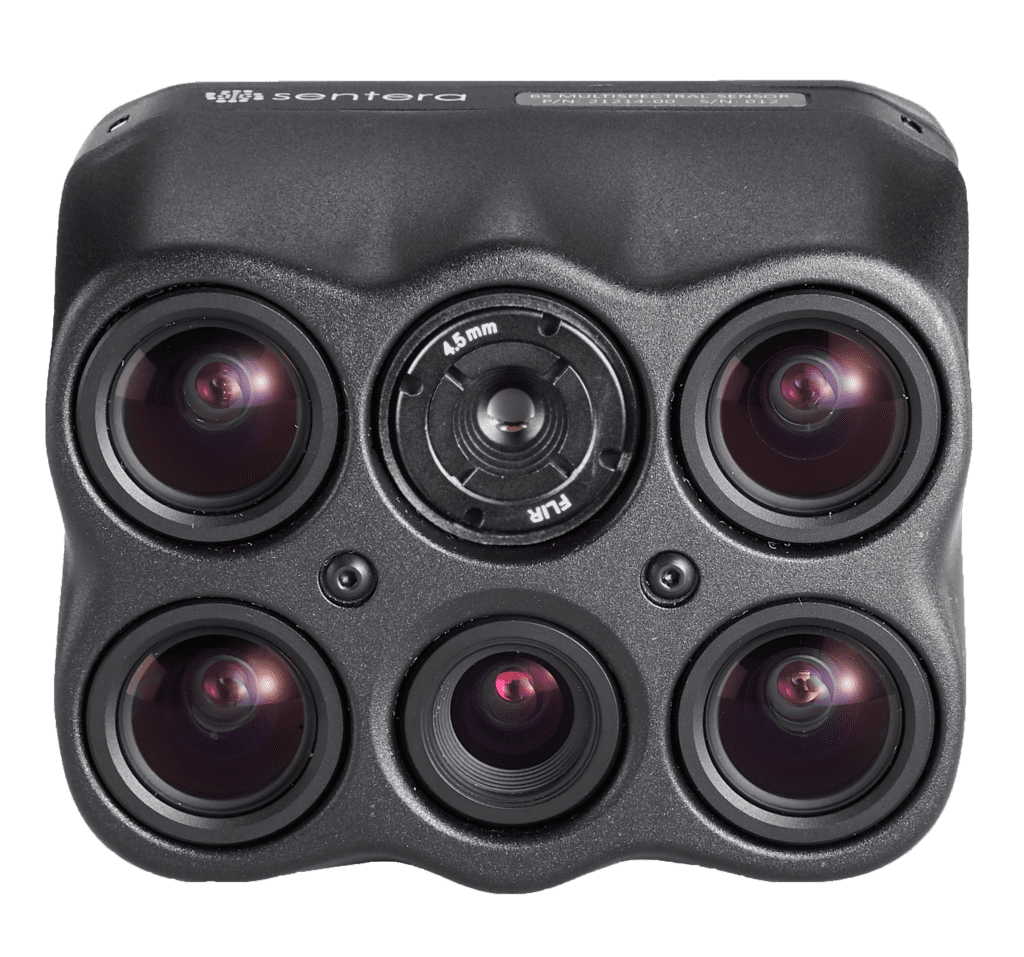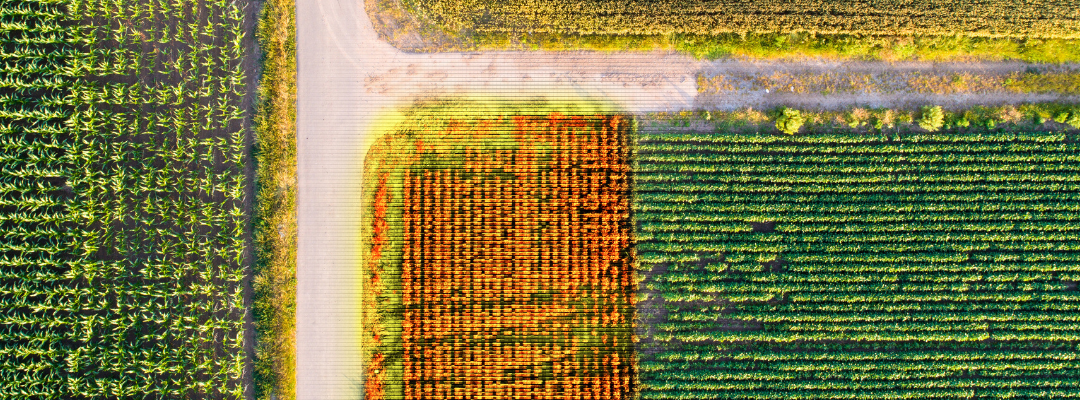Thermal imagery uncovers more than meets the eye by digging deeper into insights of the health and performance from the overall field down to the crop. Thermal sensors are typically used to uncover factors like temperature throughout the area being monitored that would be otherwise virtually impossible to measure through images.
Some of the ways thermal imagery can be used in agriculture includes:
- Detect crop stress caused by water deficiency, nutrient deficiency, pests, diseases, heat, and other factors. By identifying stressed crops early, farmers can take corrective action to minimize yield losses.
- Irrigation management by monitoring crop water use and identifying areas of uneven irrigation; using this data to optimize irrigation schedules and promote more sustainable water use.
- Early detection of diseases in plants before they are visible to the naked eye, allowing farmers to take early action to prevent the spread of disease and limit the damage.
- Detect pests such as insects, rodents, and birds to develop targeted and effective pest control strategies.
- Maturity detection, like being used to detect ripening fruit, can help farmers to harvest their crops at the optimal time.
The insights provided by thermal imagery can be used to proactively and reactively respond to what is happening at the field-edge. From informing decisions around input use to early detection of disease or stress, productivity and profitability are maximized through more sustainable, efficient, and effective practices.
Optimizing Productivity Across Use Cases
Like other forms of aerial imagery, thermal imagery can help improve crop health and performance – positively impacting crop yields.
While there are several different use cases where a thermal sensor can provide value, today we’ll highlight three key ones for leaders in agronomy.
Irrigation Management
Drought was one of the key challenges that growers faced this season; and it didn’t stop there – with stricter water management policies in place from many counties, states, and regions, it can make it tougher to identify how to manage irrigation without negatively impacting yields and crop performance.
With stringent management practices in place, understanding exactly how irrigation systems are working can be imperative to ensure even distribution of water across a field. Thermal imagery can be used to identify leaks in irrigation systems; this can even be used to identify leaks in buried pipes.
In addition, a thermal sensor can help to optimize irrigation timing – and how much water should be used given crop conditions. Thermal imagery can help identify where areas of a field may be drier than others; and this can inform irrigation decisions.
Insight into overall crop stress can be useful to know where to focus on input management, water included. By using thermal imagery, it can create a record of irrigation to help monitor overall effectiveness and fuel critical decisions for now and in the future.
Content Moisture Monitoring
Wet and dry soil have different temperatures, with wet soil having lower temperature than dry soils. Within agriculture, this can be extremely helpful to uncover what’s happening during a drought. This can be helpful to inform irrigation strategies as indicated in the previous section.
In addition to evaluating where soils may be dry due to drought conditions, it can also be useful to measure what happens if the soil content has too much moisture. This can be just as detrimental to crop health.
And, as researchers continue to strive for more weather-resistant seed breeds, uncovering which seed traits are performing better under dry conditions can help determine how to inform product selection decisions. Thermal imagery can provide an ongoing record to indicate the threshold for when these traits start to experience crop stress and impact overall yields.
Plant Disease Detection
Whether managing trials or protecting yields, understanding how disease impacts crop health and performance can be critical for informing input decisions or even identifying trait selection in trials.
Thermal imagery can identify differences in temperature between healthy and diseased plants. Unhealthy plants will have a higher temperature than those that are healthy. So, with thermal imagery, it is possible to discuss fungal, bacterial, and even physiological diseases.
And, unlike other methods that are used to detect plant disease, thermal imagery can help detect the issues at an early stage before visible symptoms even develop. As a result, agronomic leaders can intervene faster and prevent the spread of disease while minimizing crop damage.
For those that are running field trials to uncover which seed traits are more resistance to a particular disease, for instance, this can be extremely helpful to capture data over time to understand how the particular trait responds to the disease as it develops in the plant.
Take Thermal Imagery to the Next Level with the 6X Thermal Sensor
Sentera’s 6X Thermal Sensor extends optics with pixel-level temperature measurement, adding radiometric accuracy to a fast-frame rate – taking thermal imagery capabilities to the next level.

Technology like Sentera’s 6X Thermal Sensor goes beyond multispectral imagery by capturing this high-resolution imagery with an indication of temperature measurements across your plots. The imagery provided by this sensor result in more precise and valuable insights, including:
- Canopy Cover, quantifies fraction and uniformity of green vegetation
- Crop Health, monitors how crops or products are performing throughout the season
- Flowering, measures flowering development throughout the entire season to characterize growth stage, development, and maturity
- Residue Cover, provides the amount of residue covering bare soil, indicating how to manage the soil
- Stand Count, provides insight into crop emergence to assist in critical decisions around replant or treatment
These insights shine a light on performance across every acre and every plot, ensuring that growers and agronomists are making well-informed decisions and accurately validating outcomes.


